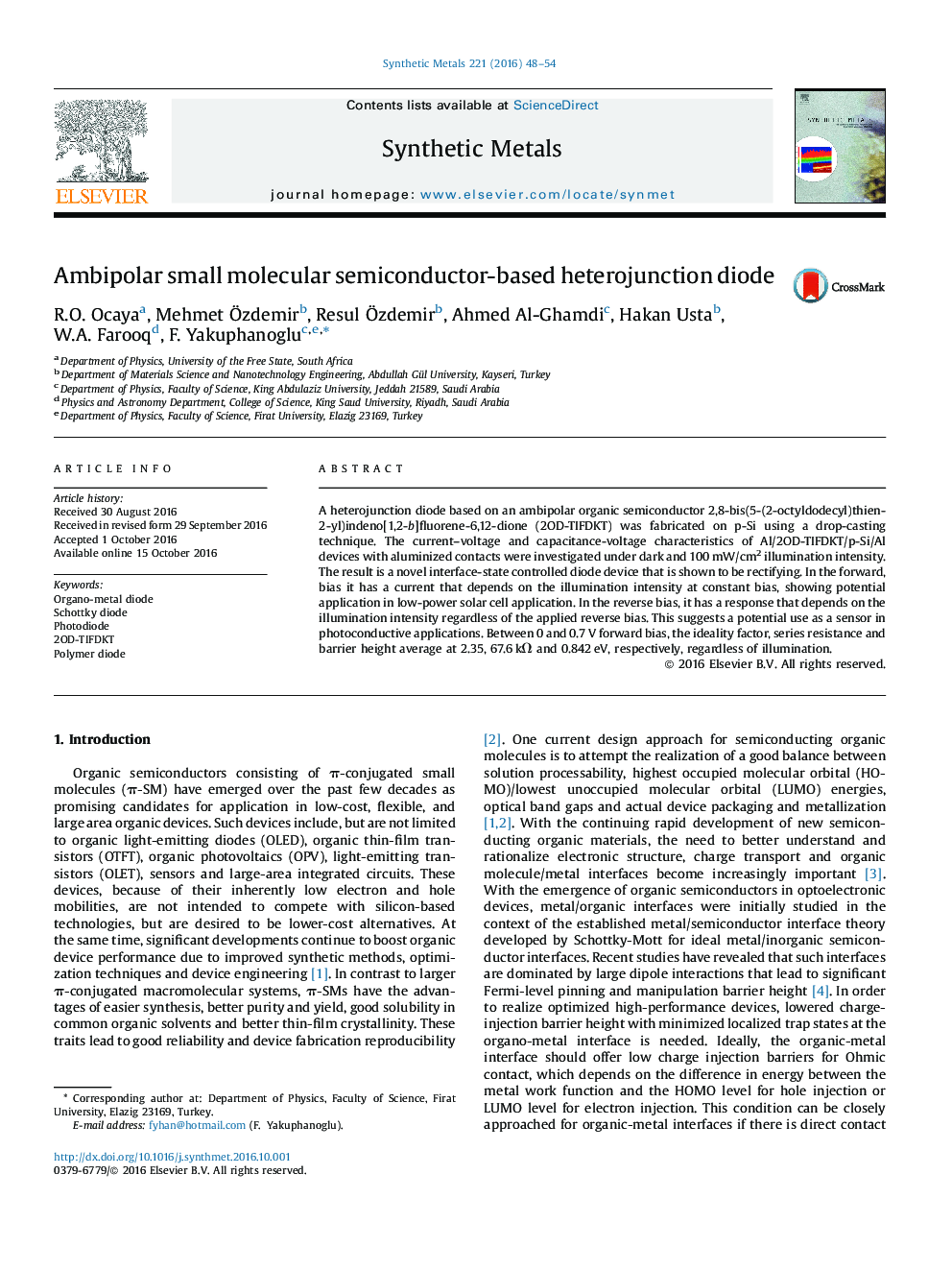| Article ID | Journal | Published Year | Pages | File Type |
|---|---|---|---|---|
| 5435566 | Synthetic Metals | 2016 | 7 Pages |
â¢Ambipolar organic semiconductor based heterojunction diode was fabricated for the first time.â¢A novel interface-state controlled device exhibited a rectifying behavior.â¢The interface states govern the electrical behavior of the device.
A heterojunction diode based on an ambipolar organic semiconductor 2,8-bis(5-(2-octyldodecyl)thien-2-yl)indeno[1,2-b]fluorene-6,12-dione (2OD-TIFDKT) was fabricated on p-Si using a drop-casting technique. The current-voltage and capacitance-voltage characteristics of Al/2OD-TIFDKT/p-Si/Al devices with aluminized contacts were investigated under dark and 100 mW/cm2 illumination intensity. The result is a novel interface-state controlled diode device that is shown to be rectifying. In the forward, bias it has a current that depends on the illumination intensity at constant bias, showing potential application in low-power solar cell application. In the reverse bias, it has a response that depends on the illumination intensity regardless of the applied reverse bias. This suggests a potential use as a sensor in photoconductive applications. Between 0 and 0.7 V forward bias, the ideality factor, series resistance and barrier height average at 2.35, 67.6 kΩ and 0.842 eV, respectively, regardless of illumination.
Graphical abstractDownload high-res image (101KB)Download full-size image
